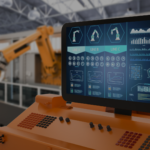As the manufacturing industry continues to evolve, sustainability has become more than just a buzzword; it’s now a cornerstone of modern business practices. In 2024, sustainable manufacturing is not only a moral imperative but also a strategic necessity, driving innovation, efficiency, and competitiveness across the sector.
Let’s explore how manufacturers are embracing sustainable practices to shape a more environmentally conscious future while maintaining profitability and staying ahead of the curve.
Sustainable Manufacturing 2024

Energy Efficiency and Renewable Sources
One of the focal points of sustainable manufacturing in 2024 is the relentless pursuit of energy efficiency and the widespread adoption of renewable energy sources.
Manufacturers are investing in innovative technologies such as artificial intelligence (AI) to optimize production processes, minimize energy consumption, and reduce carbon emissions.
By leveraging AI-driven predictive analytics and real-time monitoring systems, companies can fine-tune manufacturing operations to maximize energy efficiency while maintaining productivity and quality standards.
Furthermore, the transition to renewable energy sources, such natural resources such as solar, wind, and hydroelectric power, is gaining momentum, enabling manufacturers to shrink their carbon footprint and contribute to a cleaner, greener global economy.
Supply Chain Sustainability
In 2024, manufacturers are increasingly recognizing the importance of sustainability throughout the entire supply chain.
From raw material extraction to distribution and disposal, companies are collaborating with suppliers, partners, and stakeholders to identify opportunities for waste reduction, resource optimization, and environmental stewardship.
Complex supply chains are being reimagined and the process streamlined to minimize environmental impact, improve efficiency, and enhance transparency.
By integrating sustainability into sourcing decisions, material handling practices, and quality control processes, manufacturers can create products with longer lifespans, lower carbon emissions and footprint footprints, and higher value propositions for environmentally conscious customers.
Innovative Materials and Product Design
Another key driver of sustainable manufacturing in 2024 is the emergence of innovative materials and product design strategies.
Companies are investing in research and development to identify and incorporate sustainable materials, such as recyclable polymers, biodegradable composites, and bio-based alternatives, into their manufacturing processes.
By prioritizing circularity, durability, and eco-friendliness in product design, manufacturers can minimize waste, extend product lifecycles, and reduce environmental harm.
Moreover, advances in digital technologies are enabling more efficient and sustainable product development, prototyping, and customization, allowing manufacturers to meet the growing demand for environmentally friendly and sustainable products in diverse industries, including automotive, electronics, and consumer goods.
Worker Safety and Well-being
In addition to environmental concerns, sustainable manufacturing in 2024 places a strong emphasis on worker safety, health, and well-being.
Manufacturers are implementing rigorous safety protocols, ergonomic designs, and advanced automation solutions to enhance workplace safety, minimize occupational hazards, and improve employee satisfaction and retention.
By prioritizing the welfare of their workforce, companies not only comply with regulatory requirements but also foster a culture of trust, collaboration, and innovation, driving long-term company success and stakeholder value.
Collaborative Approach and Competitive Advantage
Ultimately, sustainable manufacturing in 2024 is about more than just compliance; it’s about seizing opportunities for growth, differentiation, and value creation in a rapidly changing business landscape.
By embracing a collaborative approach and forging partnerships with suppliers, customers, and industry peers, manufacturers can gain valuable insights, access new markets, and co-create sustainable solutions that address shared challenges and aspirations.
Moreover, by embedding sustainability into their core business strategies and operations, companies can gain a competitive edge, enhance brand reputation, keep costs, and future-proof their businesses against climate change, regulatory risks, and market volatility.
Energy Consumption
Embracing renewable energy is a pivotal step for sustainable business and manufacturing practices in 2024. Here are some tips to effectively integrate renewable energy into your company and manufacturing operations:
Assess Energy Needs:
Conduct a comprehensive assessment of your energy requirements to determine the feasibility of renewable energy integration. Identify areas of high energy consumption and prioritize them for renewable energy solutions.
Invest in Solar Power:
Solar energy is one of the most accessible and widely adopted renewable energy sources for manufacturing facilities. Install solar panels on rooftops or open spaces to generate clean electricity. Consider leveraging government incentives and financing options to offset installation costs.
Explore Wind Energy:
Depending on your location and site conditions, wind turbines can be a viable option for generating renewable electricity. Evaluate the wind potential of your site and assess the feasibility and environmental side of installing wind turbines to supplement your energy needs.
Utilize Biomass Energy:
Biomass energy, derived from organic materials such waste such as agricultural residues, wood chips, or biogas production from waste, can be used for heat and power generation in manufacturing processes. Explore biomass boiler systems or anaerobic digesters to convert organic waste into renewable energy.
Consider Hydroelectric Power:
If your manufacturing facility is located near a water source such as a river or stream, hydroelectric power may be a viable option. Evaluate the feasibility of installing micro-hydro turbines or small-scale hydroelectric generators to harness the power of flowing water.
Implement Energy Storage Solutions:
To ensure a reliable and uninterrupted power supply, consider integrating energy storage solutions such as batteries or flywheels.
Energy storage systems can store excess renewable energy generated during periods of low demand and discharge it when needed, optimizing energy usage and reducing reliance on the grid.
Optimize Energy Efficiency:
Before investing in renewable energy solutions, prioritize energy efficiency measures to reduce overall energy consumption. Implement energy-saving technologies, upgrade equipment to energy-efficient models, and optimize manufacturing and production processes to minimize energy waste.
Collaborate with Energy Providers:
Partner with renewable energy providers or energy service companies (ESCOs) to explore options for purchasing renewable energy through power purchase agreements (PPAs) or renewable energy certificates (RECs).
Collaborating with energy providers can see businesses provide access to renewable energy at competitive rates without the need for upfront costs or investment in infrastructure.
Monitor and Track Energy Usage:
Implement real-time monitoring and energy management systems to track energy usage, and emissions, identify inefficiencies, and optimize energy consumption. Utilize data analytics and performance metrics to continuously improve energy efficiency and maximize the benefits of renewable energy integration and operations.

Educate and Engage Employees:
Foster a culture of sustainability among employees by providing training and education on the importance of renewable energy and sustainable manufacturing practices.
Encourage employee engagement and participation in energy-saving initiatives to drive collective action towards achieving sustainability goals.
Sustainable manufacturing practices are driving profound transformations in the manufacturing industry in 2024, reshaping the way companies produce, innovate, and compete in a rapidly evolving global economy.
By embracing energy efficiency, renewable energy sources, supply chain sustainability, innovative materials, worker safety, and collaboration, manufacturers can pave the way for a more sustainable future while reaping the rewards of enhanced efficiency, resilience, and competitiveness.
As companies strive to stay ahead of the curve and meet the growing demand for environmentally friendly products, sustainable manufacturing will continue to be a powerful force for positive change, driving innovation, prosperity, and progress for generations to come.





